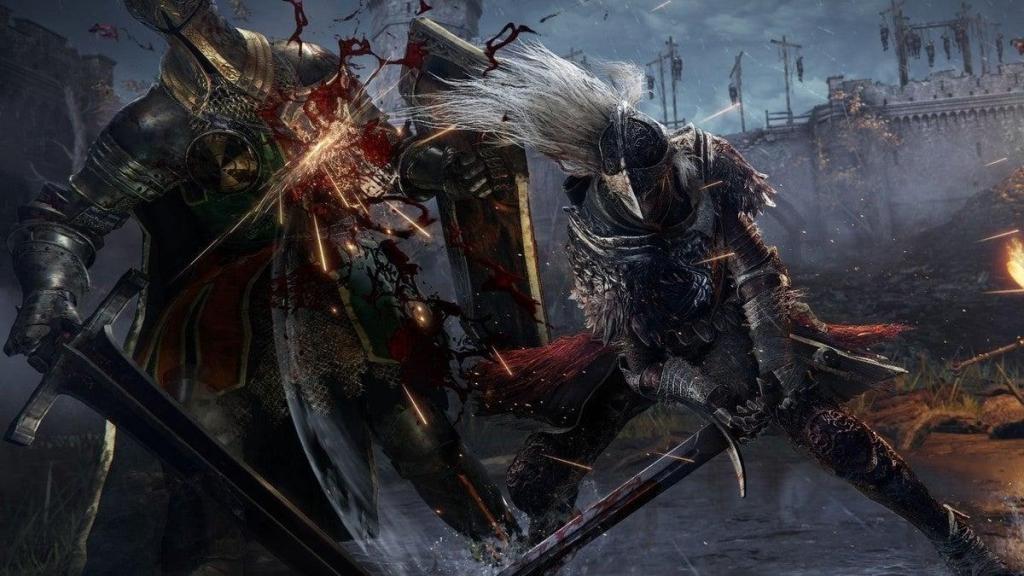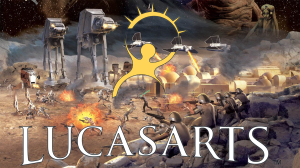If FromSoftware’s past games are considered individual successes, Elden Ring feels like the developer’s “Greatest Hits” collection. It plays like a culmination of every smart idea FromSoftware has had throughout its grueling games while still finding ways to build on the opaque experience the studio’s crafted over the years. The half-jokes referring to it as “Dark Souls 4” weren’t far off, but it manages to be much more than that, too.
Videos by ComicBook.com
For those who’ve played any of the past Dark Souls games FromSoftware’s known for, the premise of Elden Ring should be a familiar one, but it’s still easy enough to get acquainted with otherwise. You play as a class of your choosing who’s a “Tarnished,” a lowly group without blessings or advantages to speak of. Your character is different, of course, and is destined to be the Elden Lord so long as they can collect Great Runes and pieces of the Elden Ring itself scattered throughout the fantasy kingdom of the Lands Between. Big baddies litter the land and look to end your journey prematurely whenever possible.
Mad Libs a few words here and there and that description could sum up any Dark Souls game, but it’s the open-world aspect of Elden Ring that immediately sets it apart. Other than roadblocks set up by story progression or difficulty – sometimes your character simply isn’t strong enough to progress at a meaningful pace no matter how determined you are – players are able to go just about wherever they please and can complete objectives in various orders. Environments and enemies are diverse and plentiful for the most part to ensure you’re never far from a fight or something to gawk at.
A World Worth Exploring
The vastness of Elden Ring combined with FromSoftware’s inherent difficulty has advantages and disadvantages. Souls games have always been more linear in nature while still allowing players some wiggle room during progression and the ability to backtrack and farm up resources to prepare for greater threats, and that’s true more than ever in Elden Ring. If you find something’s too daunting a task, simply ride your horse around it, drop a marker on the map to remind you of the spot, and come back later. Fast-travel away to any of the dozens of Sites of Grace you’ll activate around the map, farm up by fighting the enemies you’ve gotten a handle on, and come back stronger than before.
But when you can go anywhere, where do you start, and where to afterwards? NPCs offer some degree of directional advice to follow, and the community will undoubtedly map solutions to Elden Ring’s puzzles in record time, but with a map this big, “North of these ruins and beyond the ravine” only helps so much at times. One interaction that stood out involved a non-essential quest where an NPC instructed me to search “down the way” from their location … but we were in the middle of a swamp. Another NPC instructed me where to find a piece of a medallion only to vanish into a mist right afterwards which left me unable to access their dialogue again. Elden Ring is a game that asks for players’ undivided attention to be sure.
The good news is that once you crack the cipher or are still figuring out where to go and when, distractions and dungeons abound to pull you off course. A typical dungeon in Elden Ring – newish to the Souls games but explored somewhat in Bloodborne’s Chalice Dungeons – consists of plenty of enemies, resources, and a boss, but expect to see bosses duplicated throughout the Lands Between to populate these hideaways. Some of these look a bit same-y once you see repeated layouts and aren’t scrutinizing corners and tunneling on what’s in front of you, but they’re welcome diversions regardless.
All that goes to say that you can spend a lot of time accomplishing things in Elden Ring while feeling like you’ve done very little. I’ve not yet beaten the main game (what does “beating” an open-world game, let alone an open-world Souls-like game, even look like anymore?), but with 50 hours in and plenty more to go, it’s quite the commitment.

Combat, Evolved
Story and combat have always been foundations of FromSoftware’s games, and the latter will keep you plenty busy even if you couldn’t care less who’s got an Elden Ring shard and who’s just happy to watch the Tarnished piddle about. FromSoftware found solutions to many of its past games’ problems by giving players plentiful options to make less archetypal builds more possible.
Unbridling the Focus Point stat from strictly Sorceries and Miracles, for example, means that you can finally make better use of that resource and feels like the second most important evolution of FromSoftware’s combat. Certain craftable items, summonable Spirit Ashes, and special Ashes of War affixed to weapons all use Focus Points. It’s a change that upends any idea of what your class might look like until you get used to it, and it’ll be a treat to see how it shapes the PvP meta.
Dual-wielding weapons, counterattacks, and critical hits should all sound familiar to returning Souls players, but the refined input you’ll really have to add to your arsenal is the jump. Jumping in past Souls games was never useful in combat, but it looks like we have Sekiro: Shadows to Die Twice for injecting a proper leap into Elden Ring. While Focus Point usage is the second most important combat change, jumping and crouching flips every encounter on its head and capitalizes on FromSoftware’s already impeccably precise hitboxes.
Bittersweet moments often come from the less dynamic fights where you’re using your favorite weapon and swinging some combos. It won’t matter much to those totally new to the developer’s games, but returning weapons from the Souls games largely have movesets either identical or very close to their counterparts from Souls games. Finding your favorite axe or sword feels like FromSoftware put it in the game just for you, but the movesets and sounds weapons make do make Elden Ring feel like some version of Dark Souls 4 more than anything else. Jumping and mounted combat alleviates that sameness to a degree as does swapping out to more unique weapons earned from special encounters, but it feels like more could’ve been done to mix up moves and combos.
If some playstyle-specific griping is to be allowed, it seems FromSoftware went a bit heavy on the Sorcery aspect of the game as it relates to enemies. For a kingdom which so clearly invested heavily in magic attacks and weaponry, one would think there’d be more adequate protections against that type of offense, but that’s seldom the case. Perhaps it simply seems more egregious because of the spammy nature of Sorceries, but enemies across all regions manage to wield some kind of spell no matter where you turn.
More Accommodating Than Ever
Completing the FromSoftware trifecta is the game’s challenge, a staple of everything from Demon’s Souls to Bloodborne to Sekiro and something that’s present once more in Elden Ring. Rankings of FromSoftware’s games in terms of difficulty are plentiful and rarely agreed upon, and Elden Ring will find its way into those tier lists soon, but it’s clear the developers have made efforts to make the game more accommodating and forgiving without necessarily making it easier.
Take the Stakes of Marika for example, landmarks that serve as mini Sites of Grace for players to respawn at. They’re typically located outside of boss fights or other key challenges and save players the trouble of trudging through an entire area again just to die to a cheap hit before you arrive at the real fight. As someone who was hesitant about the idea of including them, they’re a boon with no real downside. Whether you respawn right next to the foggy boss wall or on the other side of the map, you still have to figure out how to deal with the behemoth that smacked you down once already, but you now get to focus solely on that. It’s a win-win for everyone.
Other less obvious changes that become more appreciated over time include stamina drain and fall damage. The former would have to be compared against past games to truly see how it’s changed, but it certainly feels like spamming attacks is easier without using up so much stamina. Falling from great heights – especially when on your horse – is much more forgiving as well to encourage exploration and risks. Sprinting outside of combat no longer requires stamina either, and weapon durability is gone, so players are free to move and flail about the Lands Between without worrying about those arbitrary barriers.
The Verdict
Elden Ring isn’t a perfect FromSoftware game, but it’s a remarkable evolution of nearly everything people loved or detested about the developer’s past works. It’s found what feels like an agreeable balance between accommodating newcomers and alleviating frustrations while maintaining the signature difficulty expected from the studio.
Similarities to past games and references to Dark Souls 4 aside, it’s difficult to directly compare Elden Ring to other FromSoftware games in the way that it’s difficult to compare Demon’s Souls to Bloodborne or Dark Souls to Sekiro: Shadows Die Twice. It certainly feels like FromSoftware’s most ambitious and thoughtful game to date, however, and with all the considerations to different audiences, it stands to be a familiar return and a welcome jumping-on point for any Tarnished who hope to become the Elden Lord.
Rating: 4.5 out of 5
Elden Ring was reviewed on the PC platform with a review code provided by the publisher.








